Ship Discrimination Using Polarimetric SAR Data and Coherent Time-Frequency Analysis
Abstract
:1. Introduction
- Ghost echoes originating from distributed environments, such as continental land or large islands, generally have a complex random polarimetric behavior and the saturation of their polarimetric features significantly reduces the power of discrimination of fixed or adaptive polarimetric detectors. On the other hand, ghost echoes may also be generated by land-based isolated strong scatterers, or by some observed ships themselves. Such ambiguous and hence mislocated responses appear in focused images as potential targets and generate polarimetric patterns that can generally not be discriminated from the ones of real ships.
- Small natural emerged scenes, that do not contain artificial structure and might not be registered in coarse maritime maps, generally possess a polarimetric response that strongly differs from the one of the surrounding sea and the resulting high contrast might then cause false alarms.
- One of the main achievements of the TF coherence-based ship discrimination presented in this work lies on its ability to effectively mitigate energetic ghost echoes induced by SAR azimuth ambiguities, range artifacts or potential false alarms related to sidelobe patterns. This ghost filtering is not performed by comparing the cross-polarized HV and VH channels as proposed in [18,19], but rather by the TF coherence indicator itself: real target echoes remain coherent over different spectral locations, whereas ambiguous or sidelobe ones do not.
- Small natural emerged scenes, that do not contain artificial structure, are generally successfully discarded using their coherence pattern, independently of the contrasts of their polarimetric response with respect to the surrounding sea.
2. Full Resolution Polarimetric Features of a Complex Scenario
2.1. The Phenomenon of SAR Ambiguities and Artifacts
2.2 Polarimetric Analysis of a Complex Scenario
3. Principle of Multidimensional Time-Frequency Analysis
3.1. Time-Frequency Analysis Concept
3.2. SAR Data Time-Frequency Decomposition
- (1)
- 2D Fourier Transform. An SLC SAR image is transformed to the spectral domain using a 2D Fourier Transform (2D-FT).
- (2)
- (3)
- Sub-spectrum selection. The total useful spectrum is divided into R regions, called sub-spectra, centered around specific spectral locations.
- (4)
- Weighting and 2D inverse FT. Each sub-spectrum is then multiplied with a 2D weighting function in order to set the level of the side-lobes of the corresponding SAR impulse-response and is sent back to the spatial domain using a 2D inverse FT (2D-IFT) in order to get an image representing the focused SAR response of the observed scene around a specific spectral location. The set of R sub-images may then be used to characterize some properties of the observed scatterers.
3.3. Time-Frequency Analysis in the Polarimetric Case
4. PolSAR Time-Frequency Analysis
4.1. PolSAR Data TF Model
- The term t(ω) represents the response of an artificial scatterer having deterministic or almost deterministic scattering patterns. As a consequence this contribution is highly coherent, i.e., presents a high-level of correlation between samples taken at different spectral locations. Depending on the structure of the observed target, this component can remain constant during the SAR acquisition, or can be non-stationary if the backscattering behavior is sensitive to the azimuth angle of observation or illumination frequency.
- The second term c(ω) represents the response of natural distributed environments, or clutter, largely affected by the speckle effect. This contribution is incoherent, i.e., samples corresponding to non-overlapping spectra are uncorrelated, and may show a non-stationary behavior in particular cases.
- The last term n(ω) corresponds to the acquisition noise, assumed to be stationary and incoherent.
4.2. Second Order Statistics
4.3. Polarimetric TF Coherence Indicator
4.4. Polarimetric TF Coherent Scattering Mechanism Indicator
- The performance of different TF analysis modes, i.e., in separate azimuth and range directions and in both directions, rather than in only azimuth direction [12,14,15,17], are assessed for different sea scenario. The proposed technique is shown to perform well when applied, in separate azimuth and range directions, or over both axis, onto coarse-resolution space-borne data, whereas preceding TF studies [7,13,16] concentrated on a single direction or used finer resolution airborne SAR images. This aspect is particularly important since it demonstrates the applicability of the technique over a wider range of SAR images, including data sets acquired by space-borne sensors.
5. Experimental Analysis and Discussions
5.1. Sea Environment in the Presence of Ghost Echoes
5.2. Sea Environment with Presence of Small Natural Islands
6. Conclusions
Acknowledgments
Conflict of Interest
References
- Nunziata, F.; Migliaccio, M.; Brown, C.E. Reflection symmetry for polarimetric observation of man-made metallic targets at sea. IEEE J. Ocean. Eng 2012, 37, 384–394. [Google Scholar]
- Nunziata, F.; Migliaccio, M. On the cosmo-skymed pingpong mode to observe metallic targets at sea. IEEE J. Ocean. Eng 2013, 38, 71–79. [Google Scholar]
- Velotto, D.; Nunziata, F.; Migliaccio, M.; Lehner, S. Dual-polarimetric terrasar-x SAR data for target at sea observation. IEEE Geosci. Remote Sens. Lett 2013, 10, 1114–1118. [Google Scholar]
- Marino, A. A notch filter for ship detection with polarimetric sar data. IEEE J. Sel. Top. Appl. Earth Obs. Remote Sens 2013, 6, 1219–1232. [Google Scholar]
- Wang, N.; Shi, G.; Liu, L.; Zhao, L.; Kuang, G. Polarimetric sar target detection using the reflection symmetry. IEEE Geosci. Remote Sens. Lett 2012, 9, 1104–1108. [Google Scholar]
- Ferro-Famil, L.; Reigber, A.; Pottier, E.; Boerner, W.-M. Scene characterization using subaperture polarimetric SAR data. IEEE Trans. Geosci. Remote Sens 2003, 41, 2264–2276. [Google Scholar]
- Ferro-Famil, L.; Reigber, A.; Pottier, E. Nonstationary nutural media analysis from polarimetric sar data using a two-dimensional time-frequency decompostion approach. Can. J. Remote Sens 2005, 31, 21–29. [Google Scholar]
- Ferro-Famil, L.; Leducq, P.; Reigber, A.; Pottier, E. Extraction of information from the Time-Frequency Polinsar Response of Anisotropic Scatterers. Proceedings of 2005 IEEE International Geoscience and Remote Sensing Symposium, Seoul, Korea, 25–29 July 2005; pp. 4856–4859.
- Ferro-Famil, L.; Pottier, E. Urban Area Remote Sensing from l-Band Polsar Data Using Time-Frequency Techniques. Proceedings of IEEE Urban Remote Sensing Joint Event, Paris, France, 11–13 April 2007; pp. 5045–5048.
- Sauer, S.; Ferro-Famil, L.; Reigber, A.; Pottier, E. Three-dimensional imaging and scattering mechanism estimation over urban scenes using dual-baseline polarimetric insar observations at l-band. IEEE Trans. Geosci. Remote Sens 2011, 49, 4616–4629. [Google Scholar]
- Huang, Y.; Ferro-Famil, L.; Reigber, A. Under-foliage object imaging using sar tomography and polarimetric spectral estimators. IEEE Trans. Geosci. Remote Sens 2012, 50, 2213–2225. [Google Scholar]
- Arnaud, A. Ship Detection by SAR Interferometry. Proceedings of 1999 IEEE International Geoscience and Remote Sensing Symposium, Hamburg, Germany, 28 June–2 July 1999; pp. 2616–2618.
- Souyris, J.-C.; Henry, C.; Adragna, F. On the use of complex SAR image spectral analysis for target detection: Assessment of polarimetry. IEEE Trans. Geosci. Remote Sens 2003, 41, 2725–2734. [Google Scholar]
- Ouchi, K.; Tamaki, S.; Yaguchi, H.; Iehara, M. Ship detection based on coherence images derived from cross correlation of multilook SAR images. IEEE Geosci. Remote Sens. Lett 2004, 1, 184–187. [Google Scholar]
- Ouchi, K.; Wang, H. Interlook cross-correlation function of speckle in SAR images of sea surface processed with partially overlapped subapertures. IEEE Trans. Geosci. Remote Sens 2005, 43, 695–701. [Google Scholar]
- Schneider, R.Z.; Papathanassiou, K.P.; Hajnsek, I.; Moreira, A. Polarimetric and interferometric characterization of coherent scatterers in urban areas. IEEE Trans. Geosci. Remote Sens 2006, 44, 971–984. [Google Scholar]
- Brekke, C.; Anfinsen, S.N.; Larsen, Y. Subband extraction strategies in ship detection with the subaperture cross-correlation magnitude. IEEE Geosci. Remote Sens. Lett 2013, 10, 786–790. [Google Scholar]
- Liu, C.; Gierull, C.H. A new application for polsar imagery in the field of moving target indicator/ship detection. IEEE Trans. Geosci. Remote Sens 2007, 45, 3426–3436. [Google Scholar]
- Velotto, D.; Soccorsi, M.; Lehner, S. Azimuth ambiguities removal for ship detection using full polarimetric X-band SAR data. IEEE Trans. Geosci. Remote Sens 2013, 52, 76–88. [Google Scholar]
- Liu, C.; Vachon, P.W.; English, R.A.; Sandirasegaram, N. Ship Detection Using Radarsat-2 Fine Quad Mode and Simulated Compact Polarimetry Data; Defence R&D Canada: Ottawa, ON, Canda, 2010. [Google Scholar]
- Raney, R.K.; Princz, G.J. Reconsideration of azimuth ambiguities in SAR. IEEE Trans. Geosci. Remote Sens. 1987, GE-25, 783–787. [Google Scholar]
- Cloude, S.R.; Pottier, E. An entropy based classification scheme for land application of polarimetric SAR. IEEE Trans. Geosci. Remote Sens 1997, 35, 68–78. [Google Scholar]
- Cloude, S.R.; Pottier, E. A review of target decomposition theorems in radar polarimetry. IEEE Trans. Geosci. Remote Sens 1996, 34, 498–518. [Google Scholar]

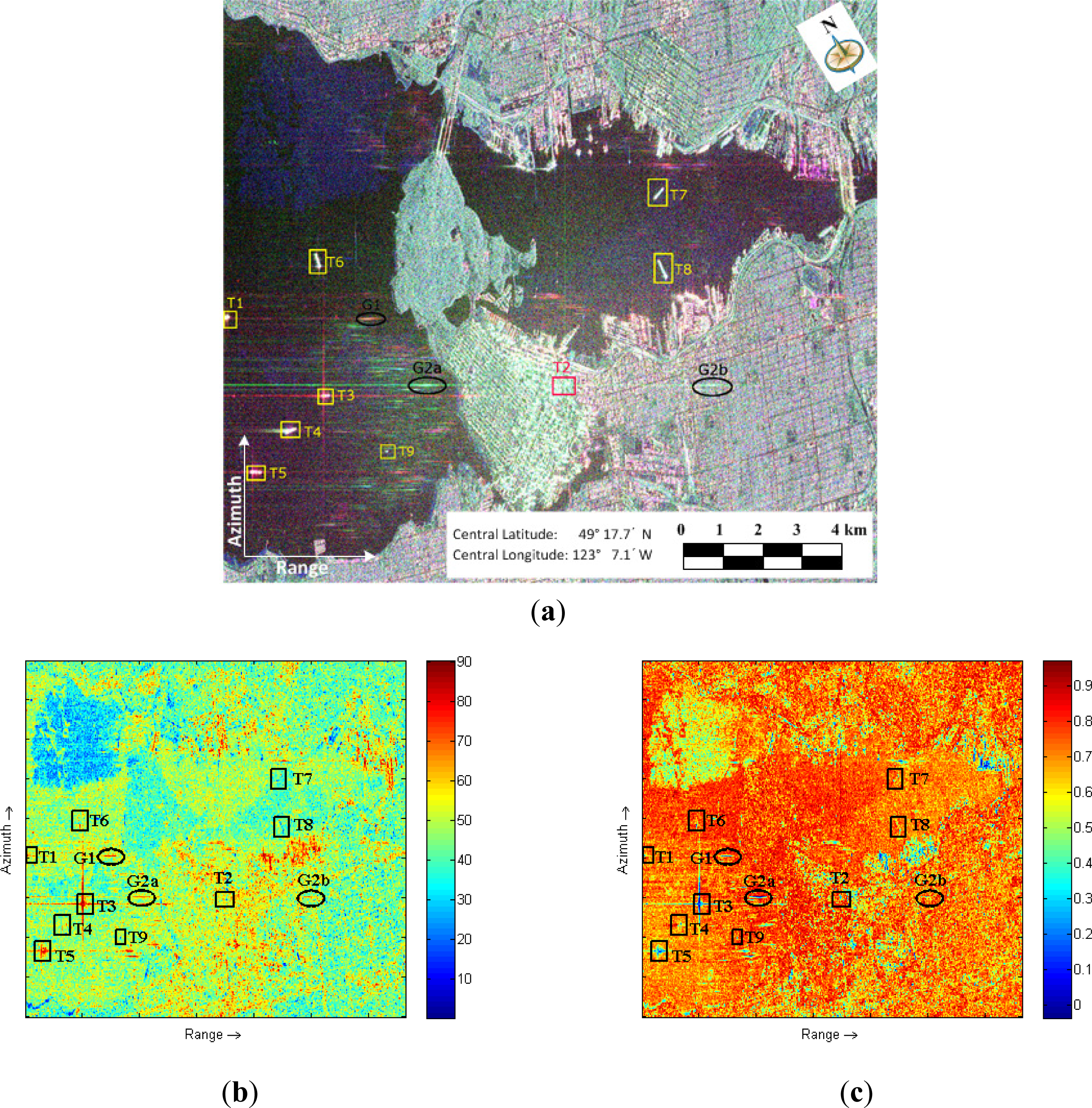
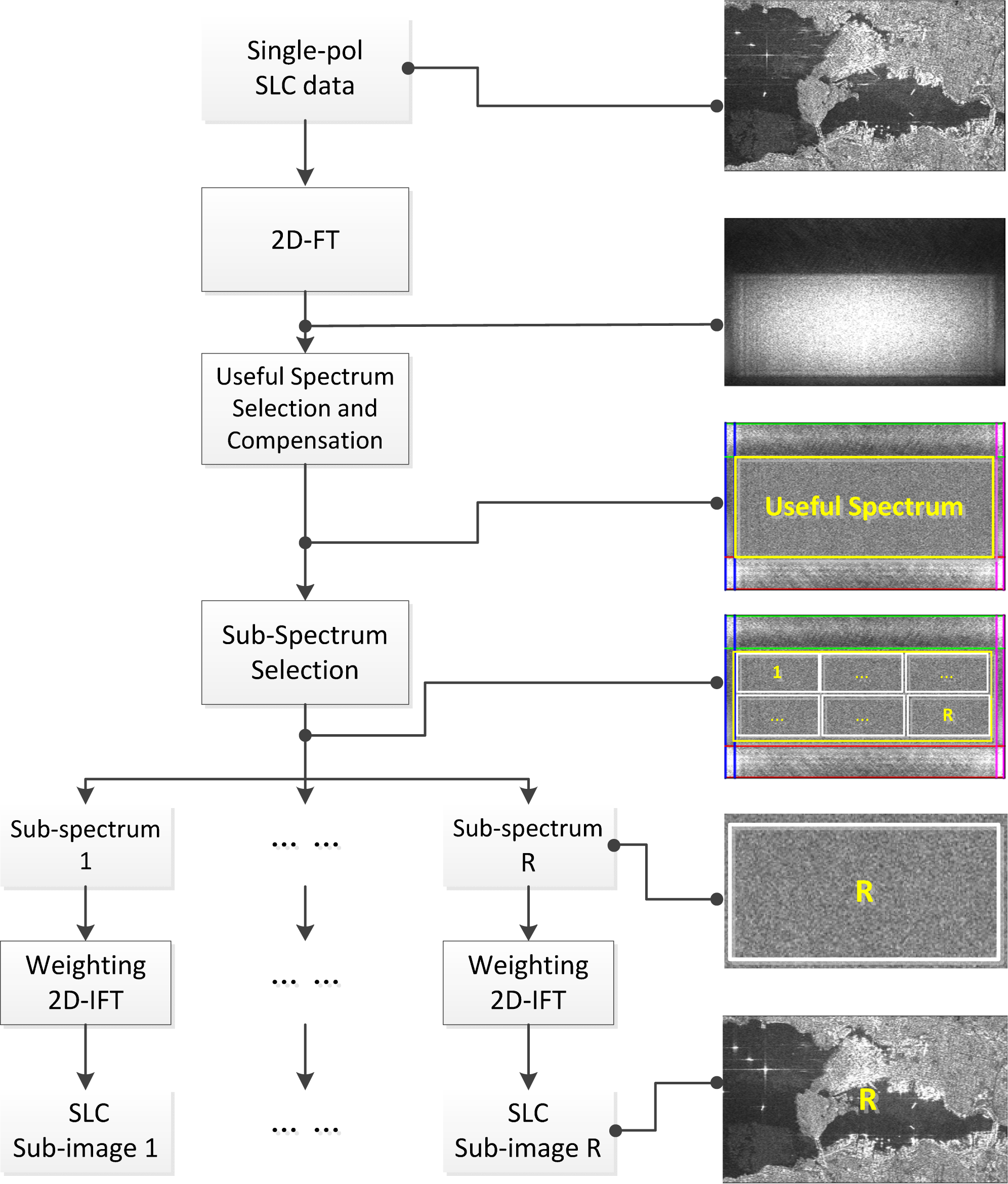

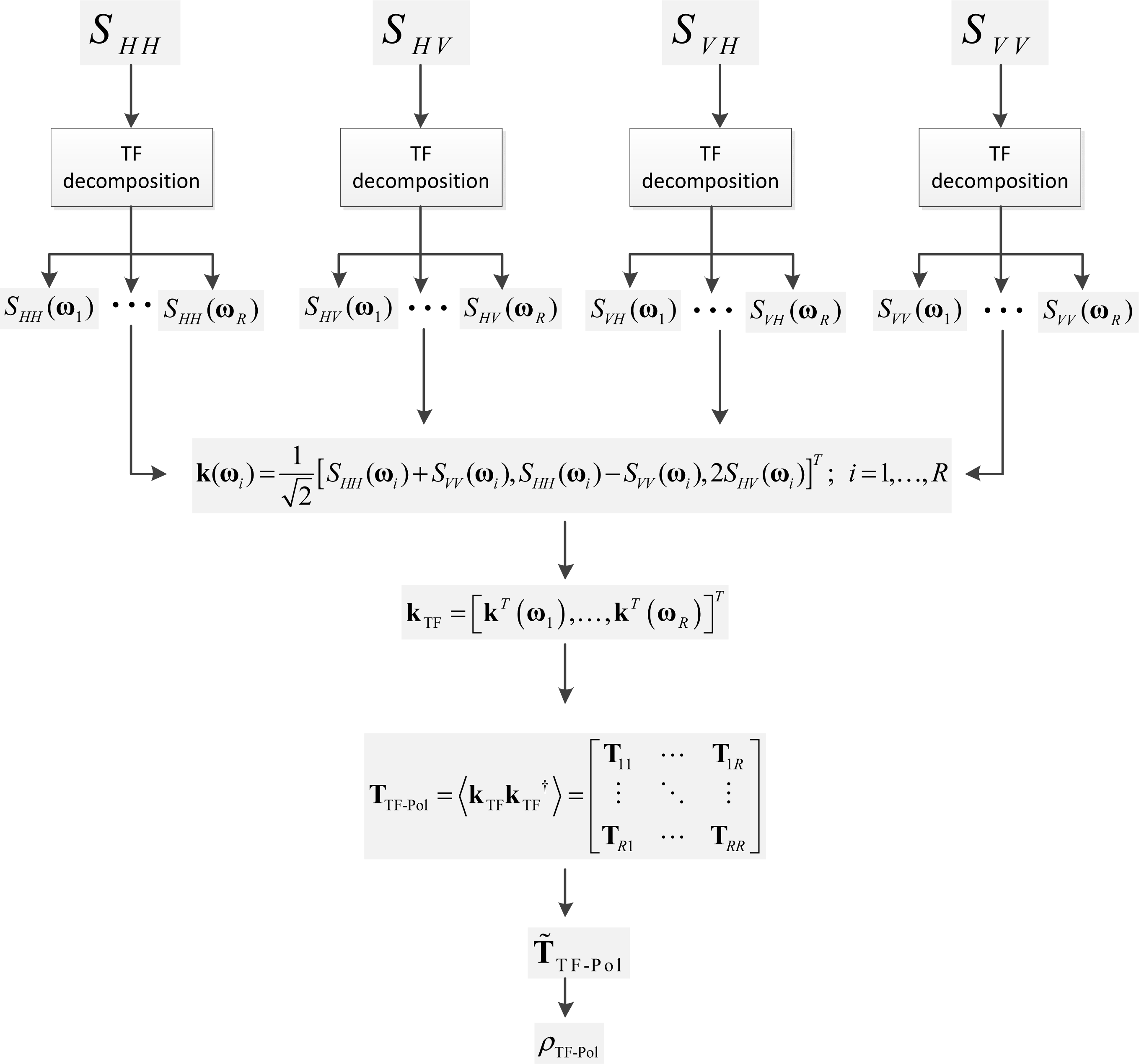
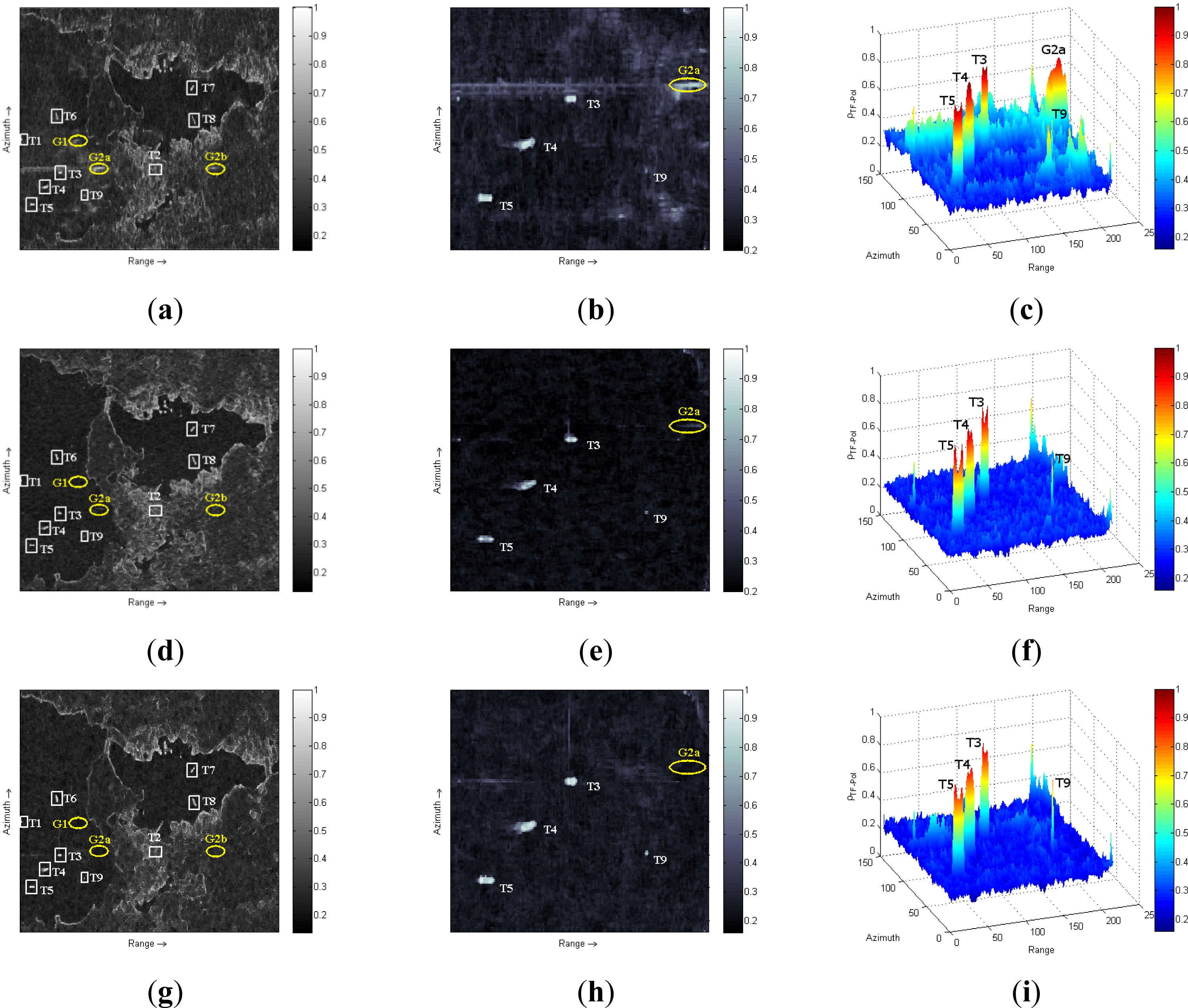
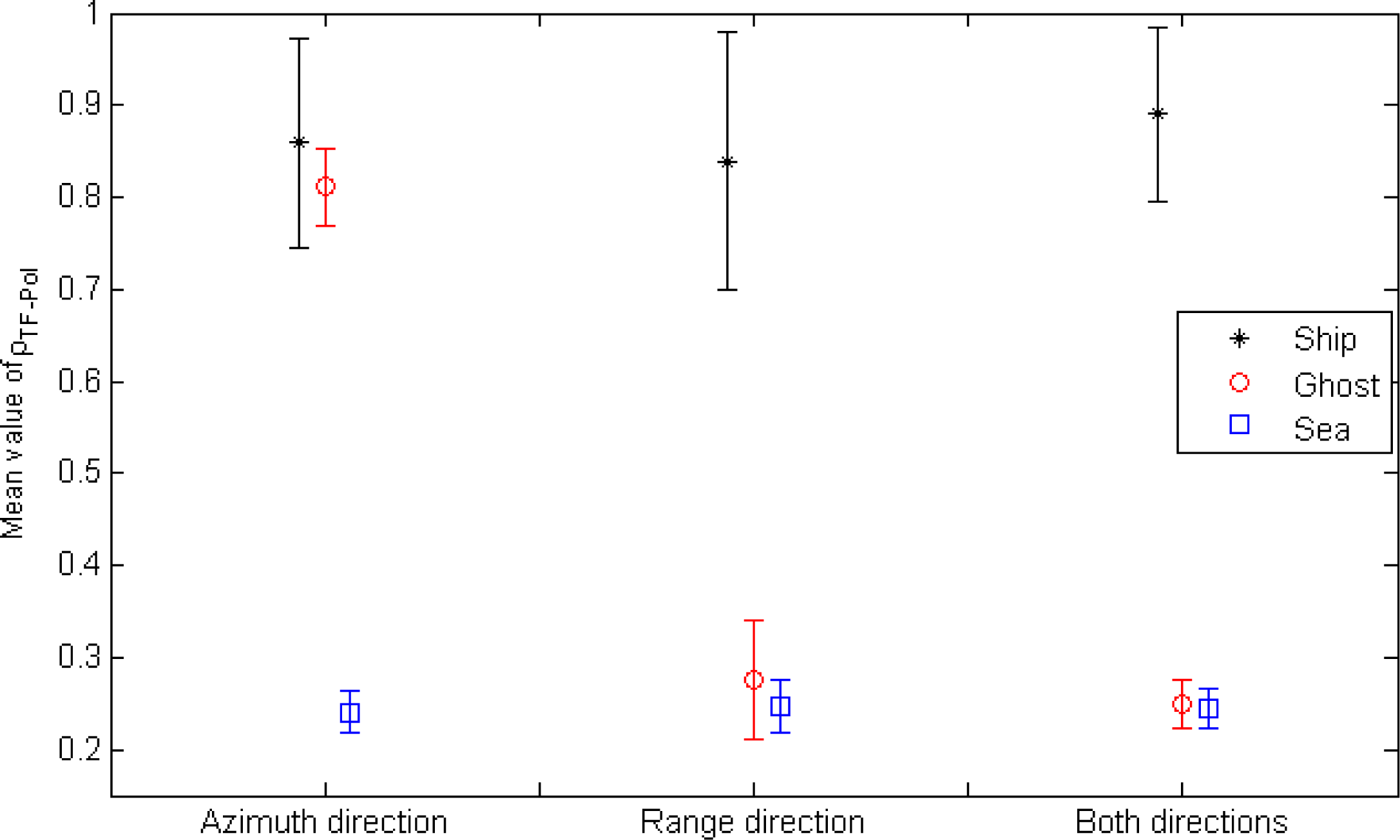
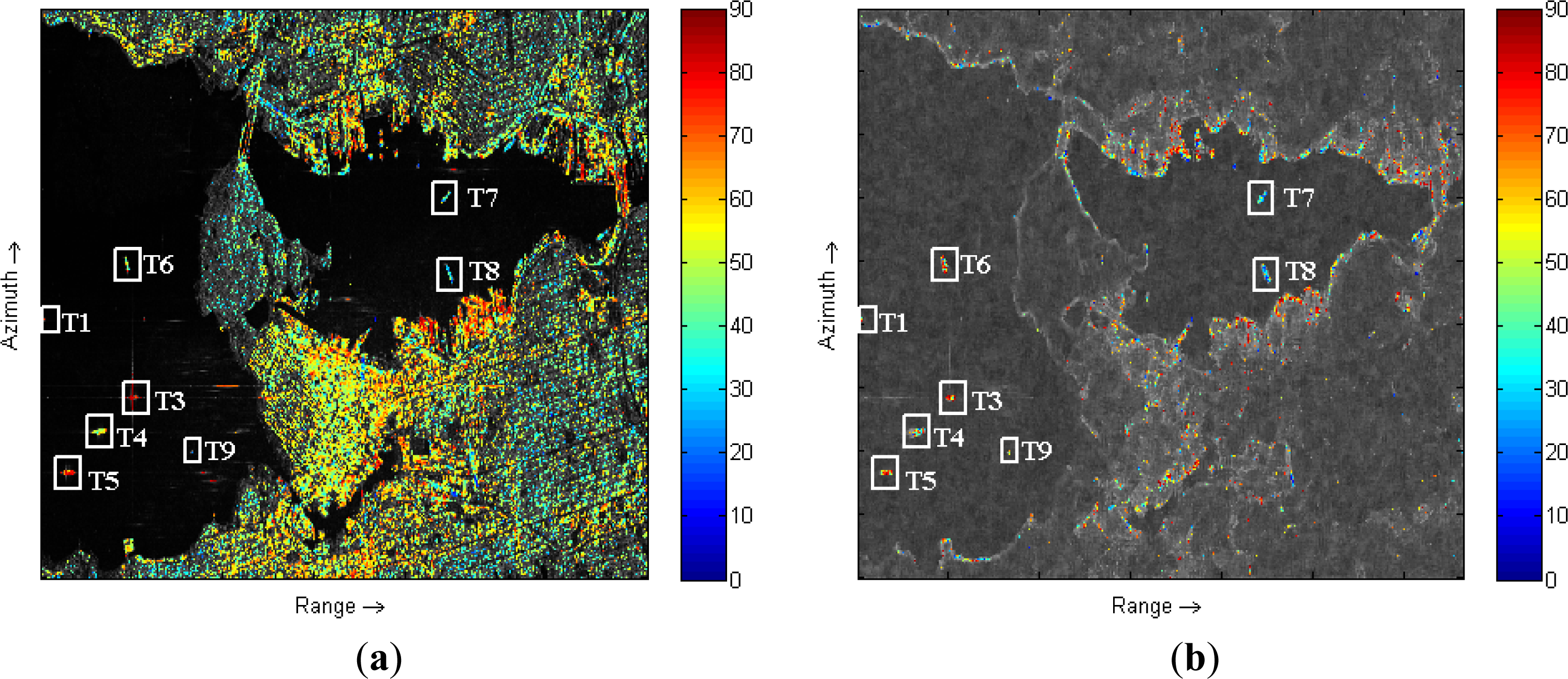
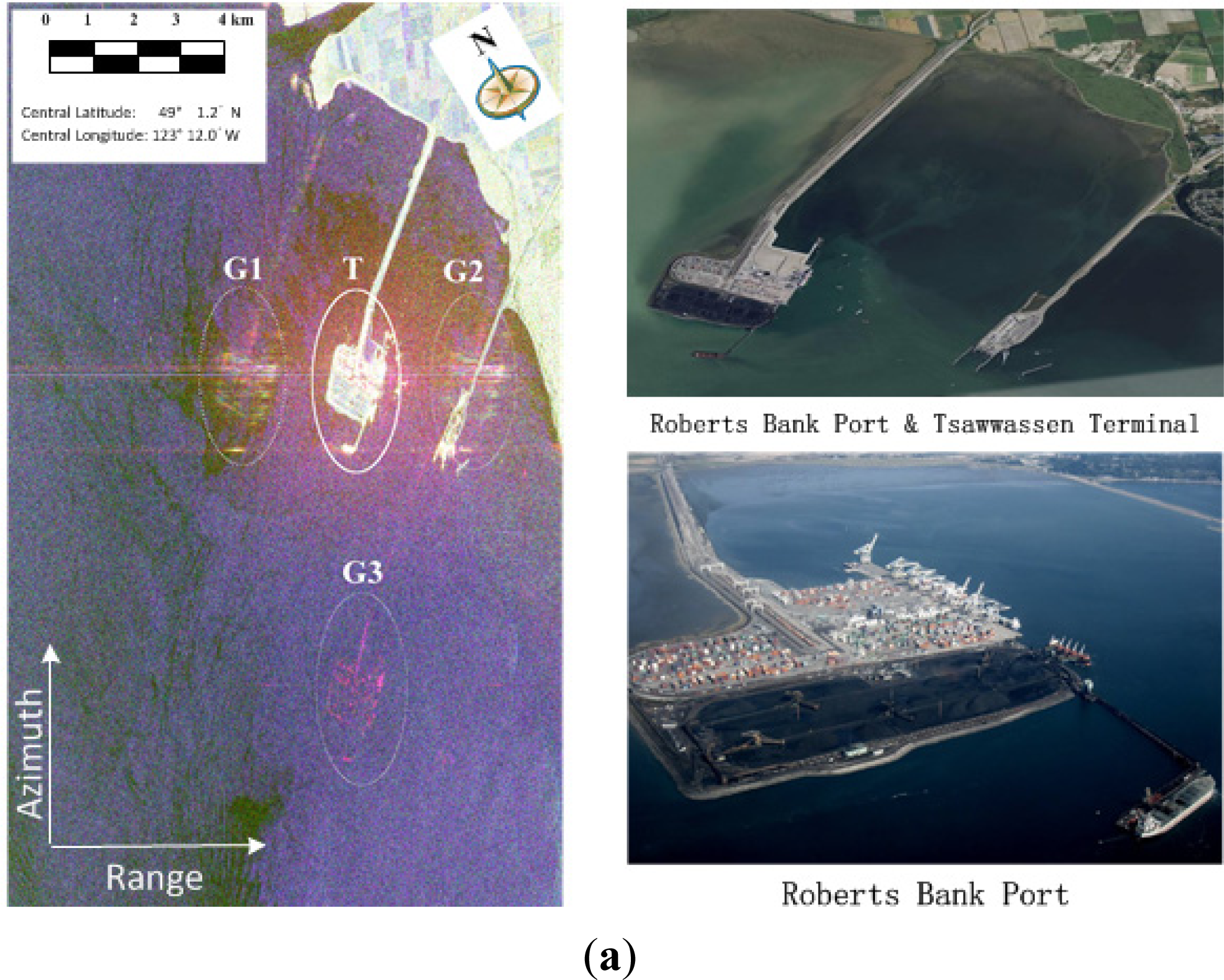


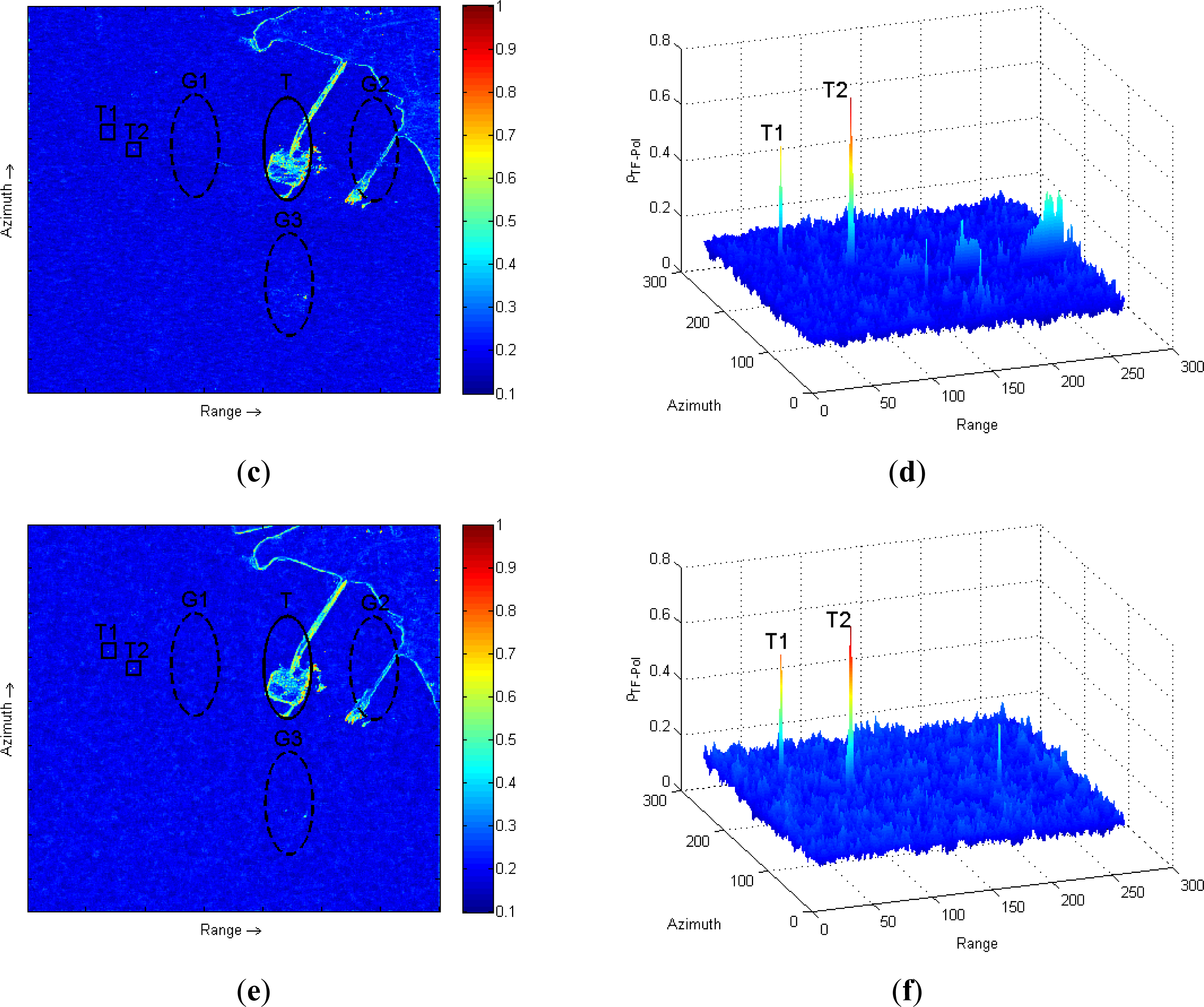
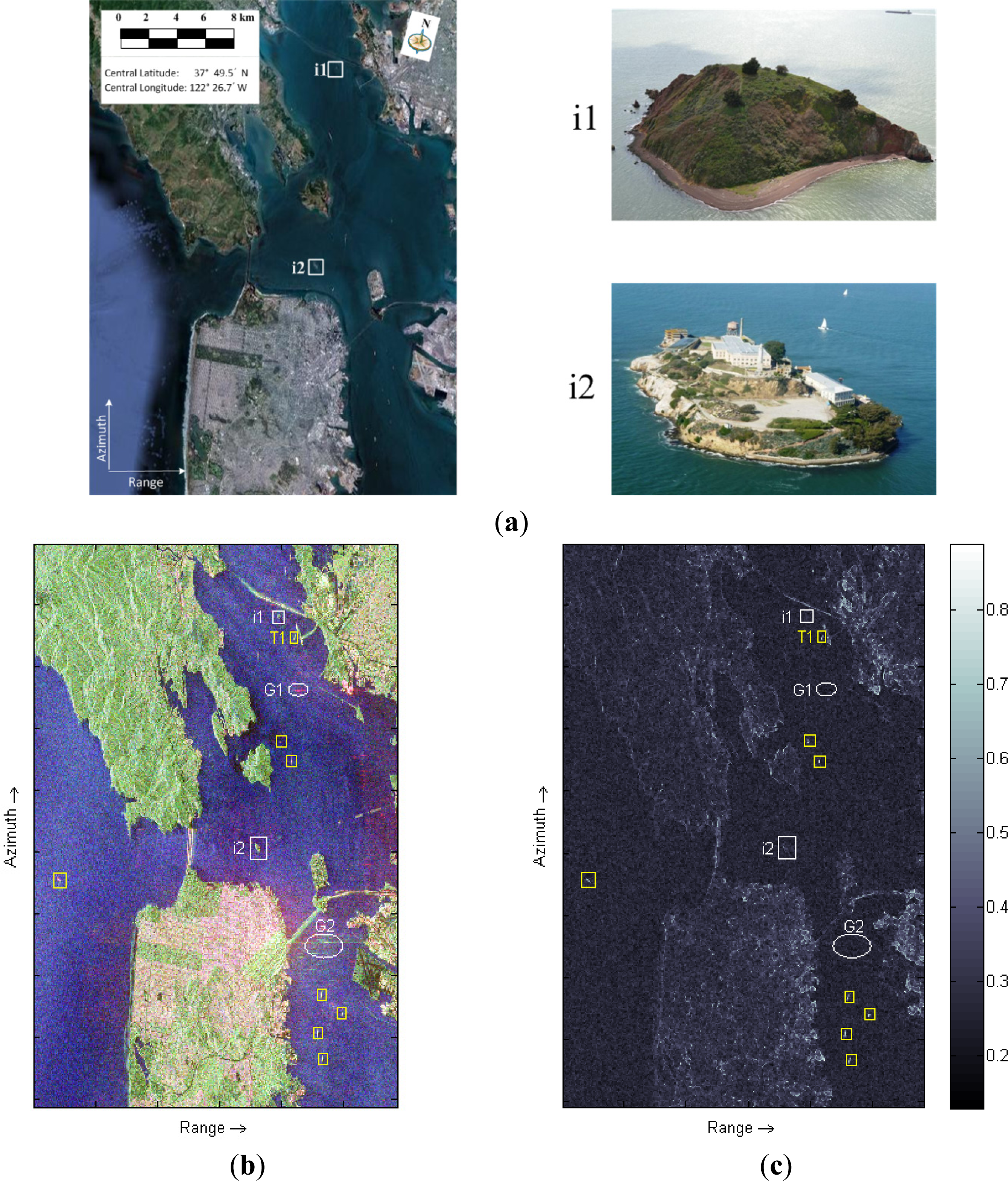


© 2013 by the authors; licensee MDPI, Basel, Switzerland
Share and Cite
Hu, C.; Ferro-Famil, L.; Kuang, G. Ship Discrimination Using Polarimetric SAR Data and Coherent Time-Frequency Analysis. Remote Sens. 2013, 5, 6899-6920. https://doi.org/10.3390/rs5126899
Hu C, Ferro-Famil L, Kuang G. Ship Discrimination Using Polarimetric SAR Data and Coherent Time-Frequency Analysis. Remote Sensing. 2013; 5(12):6899-6920. https://doi.org/10.3390/rs5126899
Chicago/Turabian StyleHu, Canbin, Laurent Ferro-Famil, and Gangyao Kuang. 2013. "Ship Discrimination Using Polarimetric SAR Data and Coherent Time-Frequency Analysis" Remote Sensing 5, no. 12: 6899-6920. https://doi.org/10.3390/rs5126899



